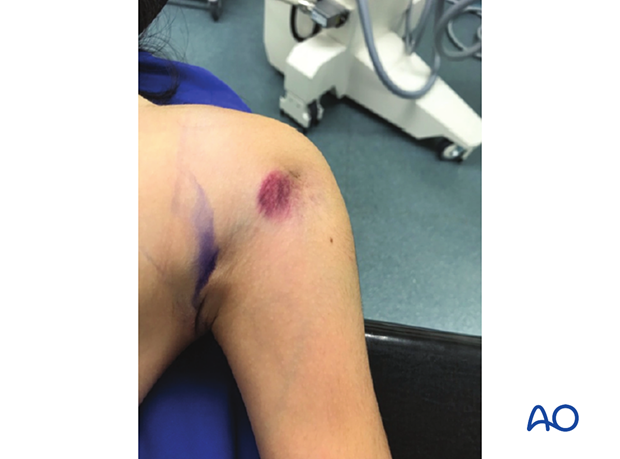Clinical evaluation
1. General considerations
Proximal humeral fractures are common in children and adolescents.
Most injuries are the result of indirect forces from a fall on the outstretched hand.
The pattern of injury depends on the age of the child as well as the mechanism and direction of force.
As with any physeal injury, a prediction of remaining growth may inform treatment choice. The physis closes between the age of 14–17 years in females and 16–18 years in males.
2. History
A careful history should include the mechanism of injury and consider nonaccidental injury in younger children with reports from any witnesses.
3. Patient assessment
Symptoms and signs
The main symptoms are pain and restricted shoulder movement.
The signs include:
- Swelling
- Bruising
- Tenderness

Physical examination
Injuries at other sites should be considered, especially in high-energy trauma. In such cases, the patient should be assessed using standard algorithms (ATLS).
The soft-tissue envelope, and vascular and neurological status of the limb must be accurately assessed and recorded. This should occur after any injury but is particularly important after a high-energy mechanism and significant fracture displacement.













